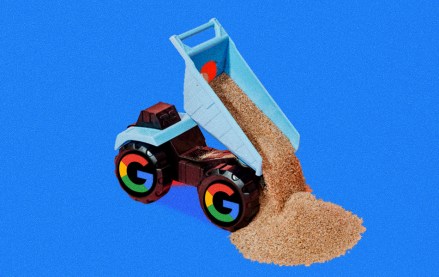Publishers look for commerce content attribution to move beyond last click
With both publishers and advertisers looking to grow affiliate commerce, a growing number of publishers and advertisers have started using affiliate networks’ attribution tools to advocate for bigger commissions from advertisers and even earn commissions from customers that have read their content, even if that read doesn’t lead immediately to a click.
BuzzFeed, for instance, is exploring several possible third-party attribution solutions that would allow them to build commerce campaigns that factor in view-through attribution, which would pay BuzzFeed commissions for people who bought featured products after reading their content. Business Insider has seen a noticeable increase from affiliate advertisers sending more revenue their way thanks to multi-touch attribution products offered by affiliate networks.
“The main challenge for content publishers is that we’re typically at the start of the consumer purchasing journey (especially when we’re driving discovery through social),” Nilla Ali, svp of commerce at BuzzFeed, wrote in an email. “So the likelihood of winning on last-click attribution is very low.”
Though last-click attribution remains the currency that powers affiliate networks, some networks began making it possible a few years ago to spread their affiliate budgets around to better account for the value contributed by different publishers in their ecosystems. Four years ago, for example, the marketing technology firm Impact rolled out a tool that allowed advertisers to pay out what are called contribution bonuses to publishers whose content customers regularly consumed on the way to purchasing an advertiser’s product.
Over that same period, many affiliate networks began adding extra layers of information about the publishers participating in them, such as social media impressions or shares of posts containing affiliate links.
Thanks to that access to analytics that might be used in different ad campaigns, agencies and marketers will use affiliate campaigns for both awareness and sales, said Nicole Ron, vp of product marketing at CJ Affiliate. And as affiliate and other marketing investments become more entwined, it has pulled affiliate marketing out of the silo it has long existed in, and changed the way people think about it.
“What we’re starting to see is a trend toward other departmental budgets coming in to affiliate,” Ron said.
Some affiliate networks have added multi-touch attribution products in response to a mix of advertiser and publisher demand. Over the summer, the affiliate network Awin announced it had formed an exclusive relationship with SingleView, an attribution vendor based in the U.K. Awin sells SingleView as a subscription add-on to both advertisers and publishers. This year, Pepperjam overhauled its reporting technology to make it easier for advertisers to create what’s called a preferred partner designation for publishers, an option they launched late last year; a preferred partner designation guarantees that they receive a commission for any sale where they appear in the journey, regardless of whether they are first or last.
Since the integration, Awin has seen advertisers revise the way they spend their affiliate budgets on the platform, said Christopher Floccare, a publisher success manager at Awin.
Breton Fischetti, vp of commerce at Insider Inc., said he is happy to see the influence of Insider Picks’ content attract advertiser investment, and expects more brands might start doing it next year.
As commerce has become a less siloed part of the media, publishers have begun pushing to integrate commerce into broader, more elaborate sales packages.This fall, BuzzFeed reorganized its sales force to emphasize multi-dimensional packages, which might include a mixture of branded content, programmatic display and commerce content.
But adding those layers of complexity requires brands to sweat additional details, something not every advertiser has the interest or bandwidth to do. “Brands want to do this,” said Todd Crawford, cofounder of Impact. “They want to grow the pie. But it’s like anything else. Do you want to spend a lot of time doing this, or a little?”
More in Media

AI Briefing: How political startups are helping small political campaigns scale content and ads with AI
With about 100 days until Election Day, politically focused startups see AI as a way to help national and local candidates quickly react to unexpected change.

Media Briefing: Publishers reassess Privacy Sandbox plans following Google’s cookie deprecation reversal
Google’s announcement on Monday to reverse its plans to fully deprecate third-party cookies from its Chrome browser seems to have, in turn, reversed some publishers’ stances on the Privacy Sandbox.

Why Google’s cookie deprecation reversal isn’t actually a reprieve for publishers
Publishers are keeping a “business as usual” approach to testing cookieless alternatives despite Google’s announcement that it won’t be fully deprecating third-party cookies after all.








